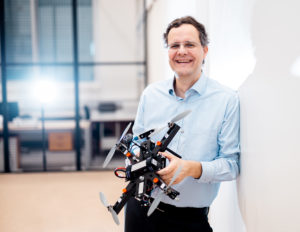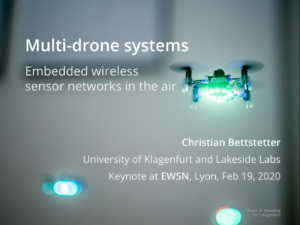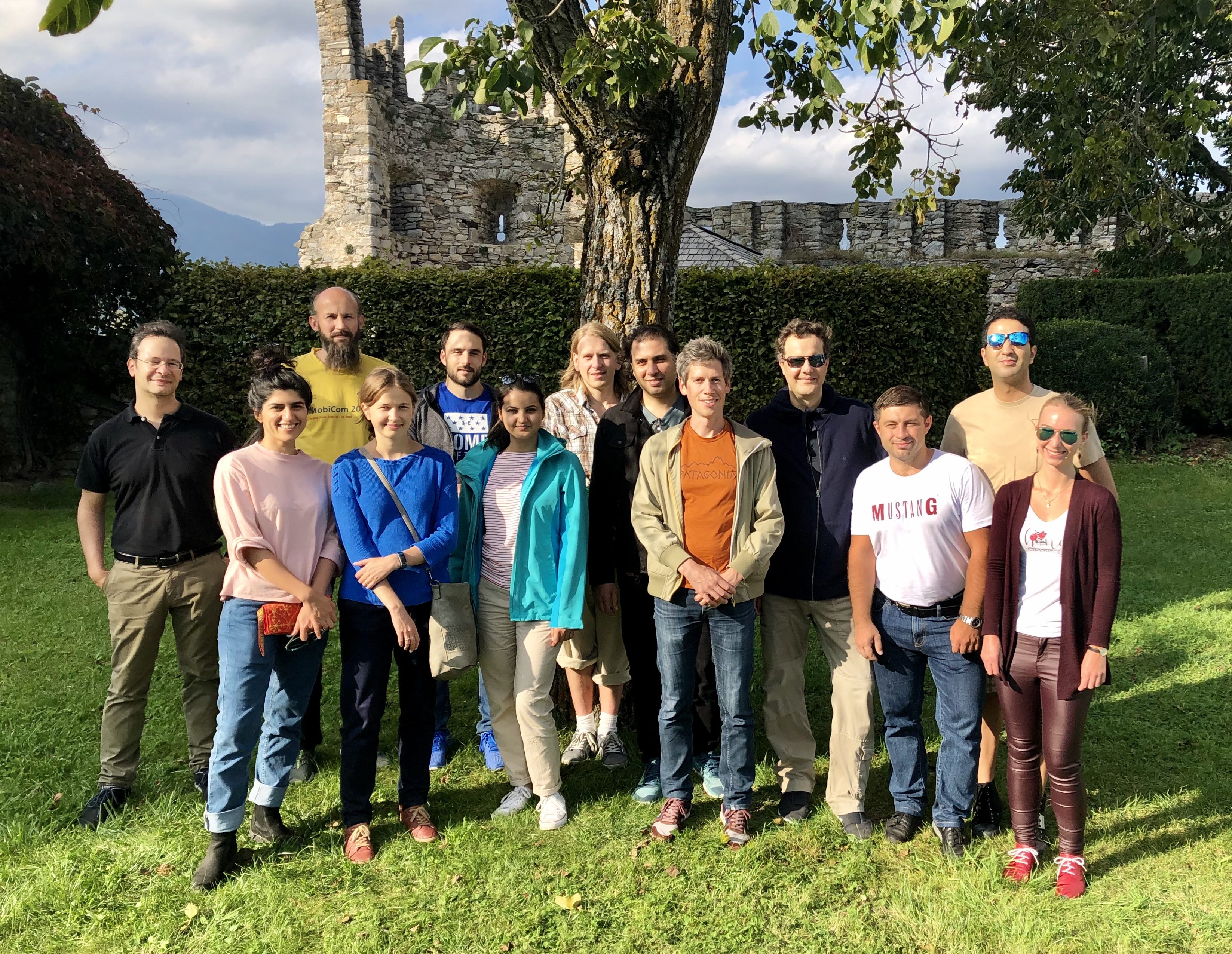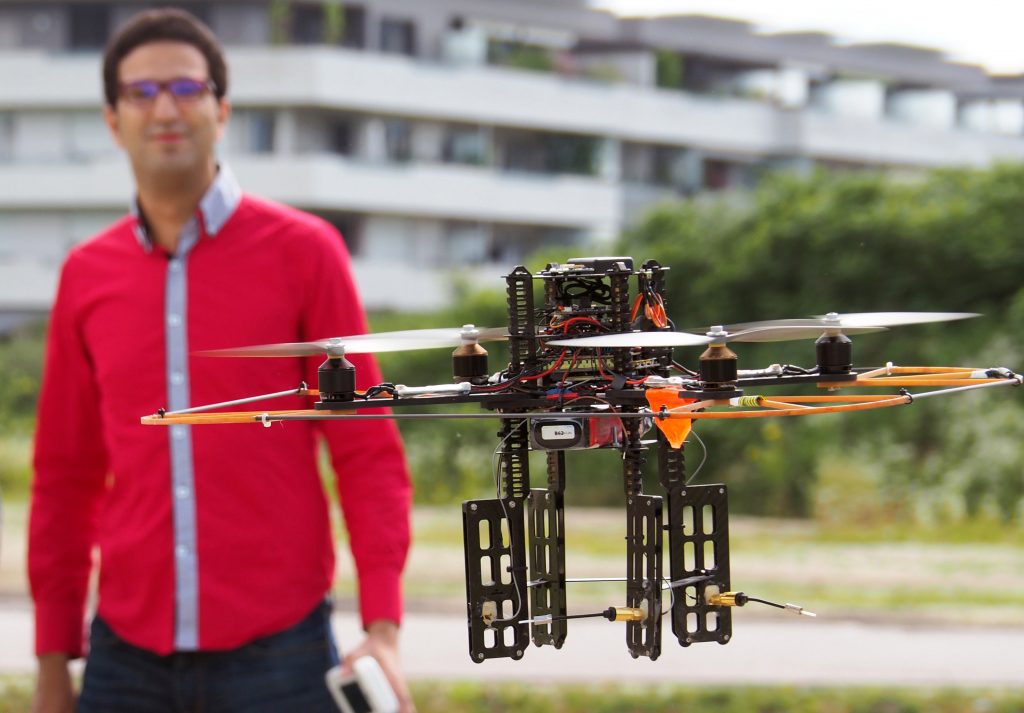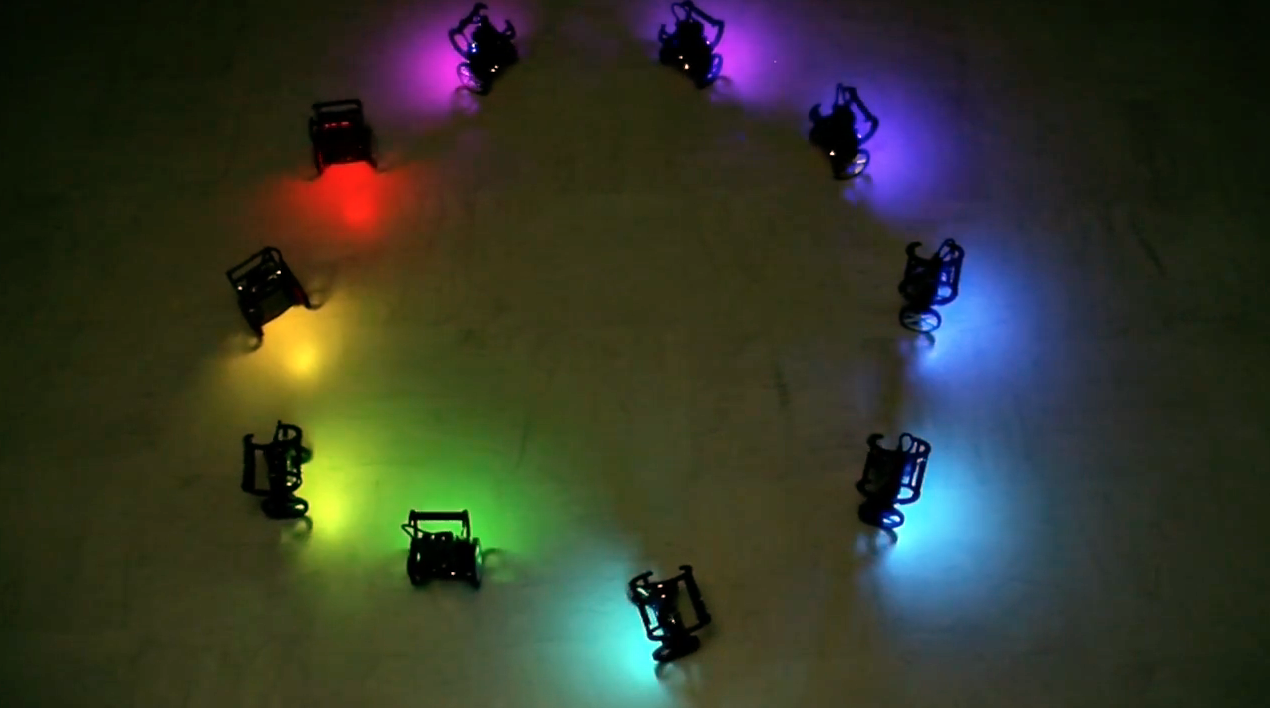A panel on the next generation of mobile communication systems was held in Klagenfurt. Experts from two network operators, a chip vendor, and research institutions discussed the opportunities and challenges of 5G.
Written by Christian Bettstetter. Photos by Christina Supanz.
“5G will become the backbone of the German and Austrian industry,” Frank Fitzek states and he should know. As a professor of communication networks at TU Dresden and coordinator of the 5G Lab Germany, he has strong links to many industries and knows their problems and desires. Fitzek was one of the panelists in the public discussion round titled “5G: Opportunities and challenges,” which Hermann Hellwagner and I organized and moderated as part of the celebrations on occasion of the 30th anniversary of our faculty’s alumni club. We invited 5G experts from different fields and branches: Besides Fitzek, we were happy to welcome Aneta Baier from the Institut für Rundfunktechnik, Driton Emini from T-Mobile Austria, Wolfgang Rauter representing A1 Telekom Austria, and Thomas Stockhammer from QUALCOMM. About 75 people attended and participated in the lively and sometimes controversial discussion, which lasted over one and a half hours.
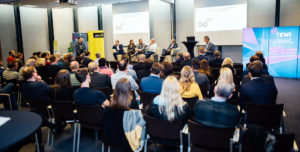 Our opening questions were: “What is the schedule for 5G introduction in Austria? What are the main technical advancements compared to 4G?” The timing of the frequency auctions is kept secret but is expected to take place in spring 2019 [see Update 1 below]. Beyond this, it seems that the schedule to get 5G rolling in Austria is rather relaxed compared to other countries [see Update 2 below: the launch came quite fast]. The main technical novelties are new antenna arrays with massive multiple-input multiple-output (MIMO) on the physical layer and a very strong softwarization of network functions at higher layers.
Our opening questions were: “What is the schedule for 5G introduction in Austria? What are the main technical advancements compared to 4G?” The timing of the frequency auctions is kept secret but is expected to take place in spring 2019 [see Update 1 below]. Beyond this, it seems that the schedule to get 5G rolling in Austria is rather relaxed compared to other countries [see Update 2 below: the launch came quite fast]. The main technical novelties are new antenna arrays with massive multiple-input multiple-output (MIMO) on the physical layer and a very strong softwarization of network functions at higher layers.
The panelists emphasized that 5G is much more than a faster radio access for the general public. It is expected to be used for low-latency control tasks in factories and transport systems. The business models for such industrial wireless networks are still unclear though, which makes it an interesting field for new players.

High costs for frequencies and infrastructure will be one of the main challenges for operators. The number of base stations will be tenfold compared to 4G, and many sites require updates due to heavier antennas. There is hope that the Austrian government will provide for fair license prices. The panelists agree that excellent chances for startups will emerge in the context of 5G. In particular, mobile edge computing brings about exciting business concepts, and we might see completely new services that do not even exist yet.
“What comes after 5G? Is it 6G?” we asked. Emini and Rauter agree and state: Typically, there is a new generation every 10 years. Fitzek slightly disagrees: If we do it right, we might not need 6G but, similar to the Internet, will continuously improve 5G. Internet people do not know the concept of generations of networks; they gradually evolve the network.
Update 1 from March 8, 2019: Austria sold 5G licenses to A1, T-Mobile, Drei, and some local operators for € 188 million (Reuters).
Update 2 from March 26, 2019: T-Mobile started the first 5G network in Austria (Der Standard).
